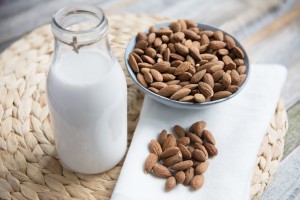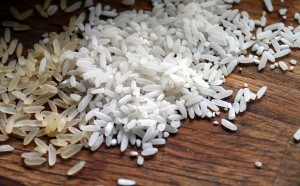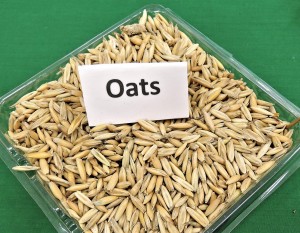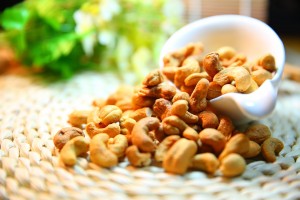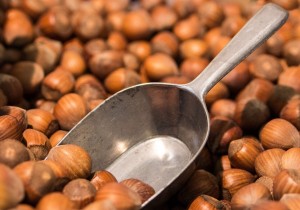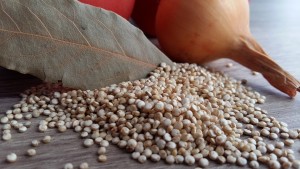If you’d have mentioned ‘Plant Milk’ many years ago, people would have looked at you with a blank stare. Almost confused as to how you could milk a plant. Vincenzo Ferrara has been on the search to learn more.
In 2018 however, a lot has changed. Today, August 22 is the second annual ‘World Plant Milk Day’, the global celebration of all milks from alternative, plant based products.
If you head to any High Street coffee chain, you’ll notice the option of having milk in your drink has just become a lot more complicated. No longer is milk just milk, it now has a variety of flavours – some sweet, some sour and some that doesn’t even look white. These new vegan friendly milks often lactose free, can dress up a standard latte, make you celebrate your cappuccino and flatter your flat white.
So we’ve created a list of the top nine different types of plant milks, your office should have:
Soy milk: Produced by soaking and grinding soybeans, soy milk is naturally free of cholesterol and low in saturated fat, making it a great source of protein, calcium and potassium. However, too much soy may be a problem for those with thyroid disease and other conditions.
Almond milk: Made by simply mixing ground almonds and filtered water in its plainest state, almond milk is naturally sweet, which means you often us this milk as an alternative in coffee, meaning you don’t need to add milk or sugar. It’s a great source of Vitamin A and D. A lot of almond milk can be made using carrageenan, which may cause digestive issues for some people.
Rice milk: Milled rice and water mixed together create this easy to make milk. Frequently mixed with additives to improve consistency and shelf-life. Rice milk is the least allergenic milk alternatives. It’s often the sweetest alternative to milk and good when mixed with coffee as well as protein powders. It does contain a high amount of carbohydrate so it is the least desirable choice for those with diabetes and contains very little natural protein. It also isn’t advisable to give too much rice product to infants and children due to inorganic arsenic levels.
Oat milk: Becoming more and more popular among the middle classes, oat milk can be made at home on a Sunday morning when you’ve got a little bit of spare time. It is most similar to dairy milk in taste and look. It also provides a great alternative to using cream products when cooking as you can easily thicken oat milk.
Cashew milk: After lightly roasting, the nuts are turned into a paste which is blended with water to create the base cashew milk. One of the most nutty in taste, and buttery in texture, it’s a brilliant accessory to a smoothie mix and contains plenty of B12. It does often contain a lot more calories compared to other plant milk due to the need to add salt and sugar into the manufacturing process to make it taste as better. However, it’s not ideal for those on a diet.
Coconut milk: It is not the slightly opaque liquid that flows from a freshly opened coconut that is coconut water. It’s made by grating fresh coconut flesh and then working that with water, traditionally by hand. Little to no water needs to be added to create coconut water. It results in a thinner liquid compared to most milks. The delicious taste does come at the cost of being high in saturated fat and no other range of useful nutrients.
Banana milk: Simply made by blending bananas and water, it’s one of the few nut and dairy free milk alternatives. When it’s homemade it’s thick and delicious (providing you enjoy the taste of bananas) and is more like a milkshake than a milk you may use to mix with your hot drinks. Kept cold, it will taste great on hot days. The lifespan of banana milk is only a couple of days, not ideal if you leave milk in the office fridge over the weekend.
Hazelnut milk: As you might know from other hazelnut products, it is often used in chocolate spreads and other chocolate based products. It has a naturally brown milk colour and is very creamy compared to nearly all other milks. A great suggestion is to use hazelnut milk with hot chocolate or a chocolate protein powder. It is very high in calcium compared to other plant based milks but is also carries quite a high calorie count for plant based milks, often second only to cashew milk.
Quinoa milk: It’s no secret that quinoa is a super food that is complete with protein and all nine essential amino acids, which is rare for a plant. The downside to quinoa as a milk, is the quinoa-y taste. Not great for a glass of milk on it’s own but when mixed with coffee, the flavour is over powered and its will taste most like a dairy milk but with the plant-based benefits.





